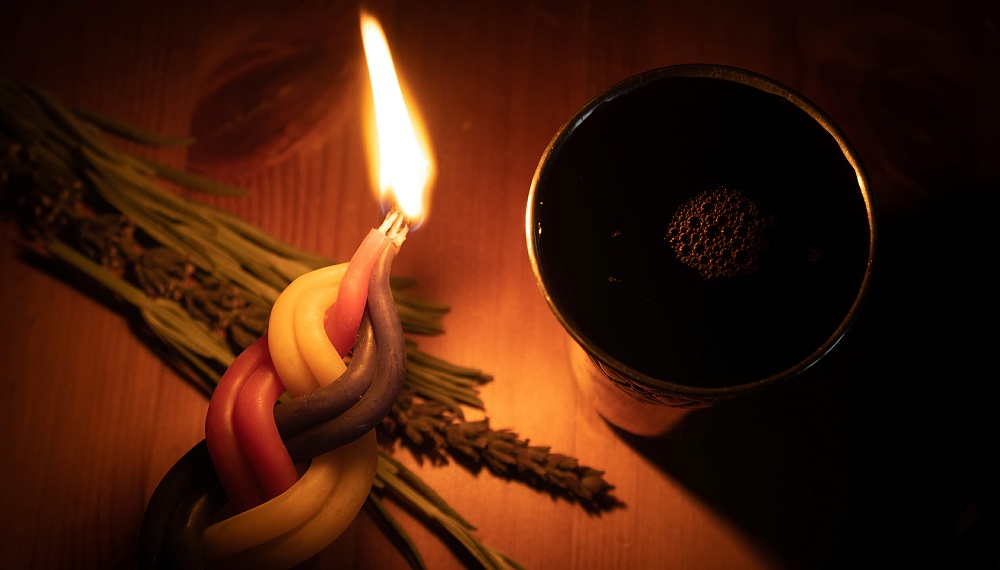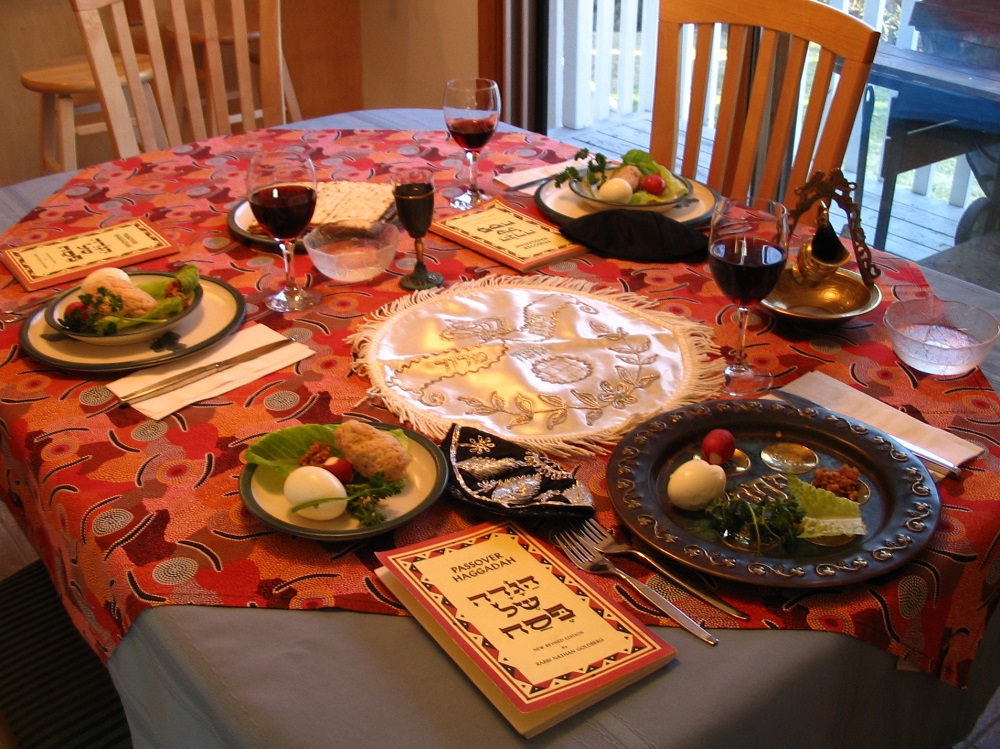The halacha is that one must start learning Hilchos Pesach thirty days before Yom Tov [Mechaber (429:1)]. The Pri Megadim is of the opinion that this is a Torah obligation. However, most poskim agree that it is only M’Derabanan. Today, since all the halachos are accessible in seforim, the minhag to have halacha shiurim thirty days before is not as common. It is therefore an obligation on every individual to learn the halachos himself (Shulchan Aruch Harav).

This year since Pesach falls out on Motzei Shabbos, havdalah is recited on the first cup of wine. This is known by the acronym יקנה”ז which stands for יין, קידוש, נר, הבדלה, זמן (Mechaber 473:1). These are the brachos in the order of which they are recited on the kos. The Mishnah Berura (491:3) says that when Yom Tov falls out on Motzei Shabbos a brocha on the besomim is not made. The special food made for Yom Tov can relax a person just like the besomim does.
The Mechaber says that if one forgot to make havdalah and he has already started saying the hagadah, he should finish the hagadah and make havdalah on the second kos. We can imply from this that if he remembered before starting the Hagadah he should make havdalah on another kos and drink it then. The Mishnah Berura says that this is possibly a machlokes between the Mechaber and Rema. The Mechaber (474:1) says that since there is no hesach hadas no new brocha is recited on the second kos. The Rema disagrees and says that the minhag of the Ashkenazim is to make a brocha rishona on each kos. Therefore the Mishnah Berura says that if you are going to make havdalah over a new kos, you will need to make a new brocha and it looks as if there are more than four kosos at the seder which is not allowed (Rema 472:7). Therefore perhaps according to the Rema even if one remembered before starting the hagadah he should still wait, unless he had kavanah when making the first brocha that he has in mind to drink between the kosos and a new brocha will not be necessary.
The Shar Hatziyun expounds on this that the reason why he did not say it is definitely prohibited is because since he is making the brocha of havdalah on this kos, it is obvious that it is not a fifth kos for the seder, rather it is only for havdalah. The Shar Hatziyun says that it is not clear what the halacha is according to the Rema.
The Biur Halacha points out, if we are to say that according to the Rema one should wait until after the hagadah to make havdalah, then he is going to be eating the karpas before havdalah which is an issur to eat then. It may be better to make havdalah beforehand especially since many poskim are of the opinion that making another brocha does not make it look like you are adding kosos, and eating before havdalah is for sure an issur. The Biur Halacha does not end with a clear psak.

When making havdalah on the second kos, first the brocha on the wine is recited, then on the candle and then hamavdil. If he only remembered in middle of shulchan orech he must immediately stop eating and make havdalah. A brocha on the wine does not have to be said since, by the previous kos, he had in mind to drink during the meal. If he only remembered in the middle of birchas hamazon, havdalah is recited on that kos. If he already drank that kos he should wait until the end of hallel and make havdalah on the fourth kos. If he only remembered after everything was over he must make havdalah on a fifth kos and make a new brocha on the wine.
The Mechaber (Hilchos Shabbos 296:8) brings two opinions if women are obligated in havdalah. Because of this the Rema says they should not make havdalah themselves rather they should hear it from someone else. The Mishnah Berura quotes the Bach that they can obligate themselves if they wish just like lulav and esrog and can recite havdalah for themselves. However the Mishnah Berurah also brings from the Magen Avrohom that the minhag of ladies is not to drink from the havdalah. Therefore she should only make havdalah if there is no one else who can make it for her. The Magen Avrohom says the reason they can make a brocha on the wine and besomim is because it is a brocha for having pleasure. But the brocha on the candle is not a birchas hanehenin and should not be said. The Biur Halacha says that even according to the opinion that women are obligated in havdalah, they are not obligated in ner and should not make a brocha on it. Reb Moshe Feinstein zt”l says that we don’t pasken like this Biur Halacha and women may always make a brocha on the ner.
By the seder, on the night of Pesach, many families have the minhag that everyone, including the ladies, recites their own Kiddush. Reb Shlomo Zalman Auerbach zt”l says that she may also say the havdalah. Since she can make it an obligation on herself it is not considered an interruption between the brocha and drinking the wine. Many Poskim hold that she should only recite the Kiddush and hear the havdalah from someone else. Still when it comes to the brocha on the ner some say she should not recite it herself rather answer amen to someone else’s brocha. Reb Shmuel Kamenetzky shlit”a says that she may also say the brocha on the ner. Since according to many opinions she is allowed to make a brocha on the ner herself, it is not considered an interruption. She may also drink from the wine of havdalah since it is also the kos of Kiddush.
The Rema (Hilchos Shabbos 296:1) brings the minhag of spilling out the wine as a siman brocha. The Mishnah Berura brings the accepted minhag is that one should overflow the kos when filling it up. Reb Shlomo Zalman says that since this is a sign for parnassah, it should not be done on Yom Tov when there is an issur to work. The minhag is not to look at one’s fingernails on Yom Tov when making the brocha on the ner. One should only look at the ner.
There is a machlokes amongst the poskim if one may light a separate ner for havdalah. The minhag is to use the neiros that were lit for Yom Tov. One should be extremely careful not to put the flames together, for this causes the fire to become weaker and one will transgress the issur of extinguishing. One should just place them near each other. Today they manufacture a Yaknihaz candle which has two wicks, this way one can also fulfill the mitzvah of the ner havdalah being an avukah – a torch.1
Prepared by R’ Avrohom Yehoshua Ziskind
________
1Sources: Mishnah Berura, Biur Halacha, Shar Hatziyun, Dirshu, Piskei Teshuvos, Kovetz Halachos